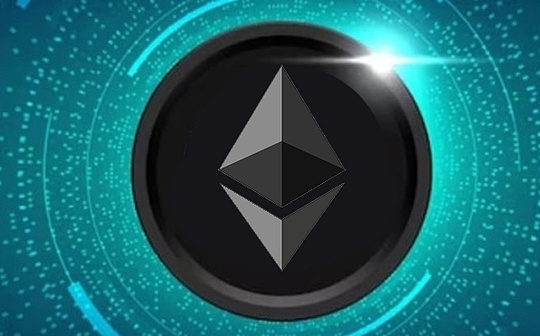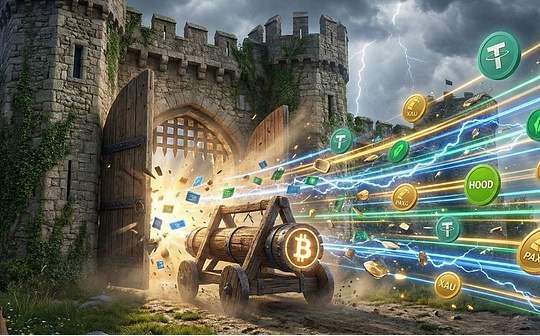
Author: Ebunker
Ethereum Foundation announces spending
Recently, the Ethereum Foundation’s sale of ETH and its funding transparency has attracted widespread attention from the crypto community.In response, the Ethereum Foundation announced its official spending at the end of August.
According to the chart, “new institutions” account for the largest share of foundation expenditure, at 36.5%.Vitalik Buterin said this category includes funding to various organizations, such as the Nomic Foundation, L2 BEAT, the Decentralized Research Center and the 0x PARC Foundation, and the main goal of building these new organizations is to strengthen the Ethereum community in the long term.
The second largest expenditure category of the foundation is L1 R&D, accounting for 24.9% of the total expenditure.This category includes funding external client teams (62%) and internal foundation researchers (38%).Internal expenditures include teams such as Geth, Cryptography Research, Devcon, Solidity, Next Billion, and other teams whose responsibilities are public and have relevant event information on their websites, githubs and social channels.
In addition, the Foundation has published activities on external expenditures or funding in the past 4 years.Projects funded by the foundation in Q1 2024 include Xerxis, Ethereum Bogota, Motherless Africa, ETHKL, etc.The remaining expenses of the foundation include community development (12.7%), zero-knowledge application (10.4%), internal operations (7.7%), developer platform (6.5%) and L2 R&D (1.4%).
In addition to revealing the Ethereum Foundation’s spending, Vitalik also revealed that his annual salary in the organization is about $139,500.This is not as high as his net worth. Forbes estimates that Vitalik’s net worth will be approximately US$1.5 billion in 2022.
Regarding the Ethereum Foundation’s fund management program, Vitalik mentioned that the foundation will spend 15% of the remaining funds each year, meaning the foundation will always exist, but its influence in the ecosystem will change over time.Small.Foundation member Justin Drake expects the foundation to still have about 10 years of operating capital, but this will fluctuate with the ETH price.
Vitalik sells ETH again?
Vitalik was criticized again after selling $441,000 worth of ETH on September 12, but explained that the order was placed in August and said it was the last sale (to fund ecological defense projects) and expectedThere will be no more similar transactions.It is reported that this transaction was triggered by Cowswap twap, which was set as early as August 29 (the twap strategy can execute large orders by spreading large orders into smaller parts for a certain period of time).
According to LookOnChain, the wallet associated with Vitalik sold a total of 190 ETH on September 12, and has sold $2.28 million worth of ETH since August 30.In response, Vitalik insisted that he had never made any profit from selling ETH because all the proceeds were used to fund projects, which was considered a silent relief.
How does Vitalik and the Ethereum Foundation view DeFi?
Kain Warwick, who has been engaged in DeFi development for a long time, recently accused Vitalik and the Ethereum Foundation of “opposing DeFi”.The developer claims that the foundation only spends a small portion of its budget each year to promote the development of the decentralized finance sector and wastes the vast majority of its annual budget in other unimportant places.
Vitalik responded to this, emphasizing his long-term focus on decentralized exchanges and on sustainable projects, and reiterated his commitment to the decentralized finance sector, but he was not interested in investing in short-term projects with unsustainable prospects, such as liquidity.Sex mining may depend on issuing new tokens and then selling them to temporary projects on the market, etc.
Dankrad Feist, a member of the Ethereum Foundation team, said that the foundation has no unified view on DeFi. He personally likes DeFi, but DeFi cannot solve all the problems of Ethereum alone.The financial market itself does not create value, but it can create more value for society by providing liquidity, insurance and other services.DeFi’s most valuable contribution on Ethereum is its decentralized stablecoins.He hopes these stablecoins can become “pure” cryptocurrency exchange mediums, but they have severe expansion restrictions, so custodial solutions are now more popular.Nevertheless, he believes that having decentralized, censored alternatives is valuable.
The main directions of recent research by the Ethereum Foundation
Despite its controversial spending, the Ethereum Foundation is actively studying technological progress in multiple fields.
Regarding Zero Knowledge Proof (ZK), George Kadianakis says that research on STARKs and SNARKs is being used, such as recursive signature aggregation and implementation of post-quantum security.Justin Drake mentioned that the introduction of SNARKs has significantly reduced the proof cost and emphasized the formal verification work of zkEVM.
Regarding the Verified Delay Function (VDF), Antonio Sanso said that although it has not been implemented in Ethereum, the team is studying its potential applications, but further improvement and evaluation is needed.
Regarding the Maximum Extractable Value (MEV), Barnabé Monnot and s 0 isp 0 ke discussed research progress in ePBS, Execution Tickets, and Inclusion Lists to reduce the impact of MEV and improve the network’s censorship resistance.
Vitalik Buterin and Justin Drake believe that in the future, binary hash trees may be used instead of Verkle trees to accommodate technological upgrades.In addition, formal verification and verifiable computing are seen as key technologies to ensure code correctness and facilitate interoperability between different programs.
How does the foundation view the issue of ETH value accumulation?
As we all know, according to the roadmap, rollups form a diversified ecosystem on Ethereum L1, with a large number of DApps on L2, and users pay extremely low fees, but this involves the lack of value accumulation for ETH assets.Regarding this issue, Ethereum Foundation members believe that the accumulation of value of ETH is crucial to the success of Ethereum.ETH supports decentralized stablecoins as a currency and provides economic security to the network.
Foundation member Justin Drake believes that Ethereum must become the programmable currency of the Internet, and the accumulation of value of ETH will be achieved through total fees and currency premiums.What matters is the total fee, not the fee per transaction.Even if each transaction costs less than one cent, it can still generate billions of dollars in revenue through 10 million transactions per second.
Another important aspect he mentioned is the proportion of use of ETH as a mortgage currency, such as supporting DeFi.Different financial activities on Ethereum will bring value capture to ETH.
In addition, he also believes that in the Rollup roadmap, the Ethereum mainnet will be the intersection of high-value activities and L1 expansion is necessary.
If Ethereum is designed to promote sustainable economic activity, the accumulation of value of ETH will follow.The growth in ETH’s value will support the security and economic activity of the Ethereum ecosystem, thus promoting Ethereum to become a global financial platform.
How to deal with the centralized problem of Layer 2?
Currently, more than 80% of Ethereum’s transactions occur on Layer 2 solutions, including Arbitrum, Optimism, Base and zkSync.L2 networks have also faced some criticism recently for their centralization. Last month, Justin Bons of Cyber Capital raised concerns that these networks are risky due to their centralization.In this regard, Vitalik explained that the highly decentralized L2 solution essentially cannot take away users’ funds without reaching a strong consensus.
On September 12, Vitalik said that regardless of whether he invested or not, he would only publicly admit that he reached the L2 stage of Stage 1 or higher in his decentralization work.Vitalik reiterated the importance of L2 and emphasized the importance of security, suggesting that initial protection should not be cancelled until proven that the system is thoroughly verified.Starting next year, he plans to only mention publicly (such as in public places such as blogging, speeches, etc.) L2 at Stage 1 or higher, and provide a “possibly short grace period” for truly interesting new projects.
Vitalik Overview of the Stage 1+ rollup standard, that is, the network requires 75% of the board’s consensus to overturn the proof system, and at least 26% of the board members must be independent of the rollup team.He believes that “this requirement is reasonable and necessary for network security. The era of rollup being beautified as “multi-signature” is about to end, and the era of encryption trust has arrived.” It is reported that several zero-knowledge (ZK) rollupsThe teams all plan to achieve this milestone by the end of this year.
summary
In summary, although Ethereum is facing some FUD, the Ethereum team is still actively facing and solving problems.As the largest public application chain, Ethereum’s fundamentals have not been shaken, and there is no need to be overly pessimistic.
The biggest problem with Ethereum at present is that industry applications have encountered a bottleneck period, but the low handling fees of L2 are brewing and promoting the explosion of new applications.As the capital market liquidity situation improves, the adoption rate of the crypto industry will accelerate, and the future of Ethereum is still worth looking forward to.








